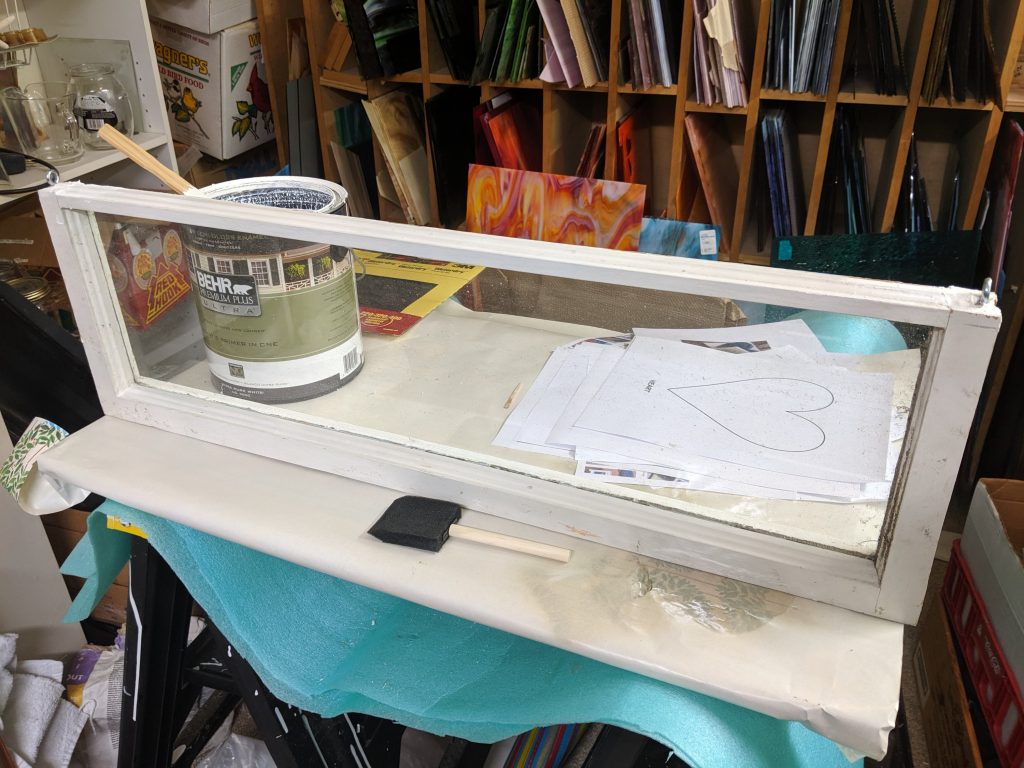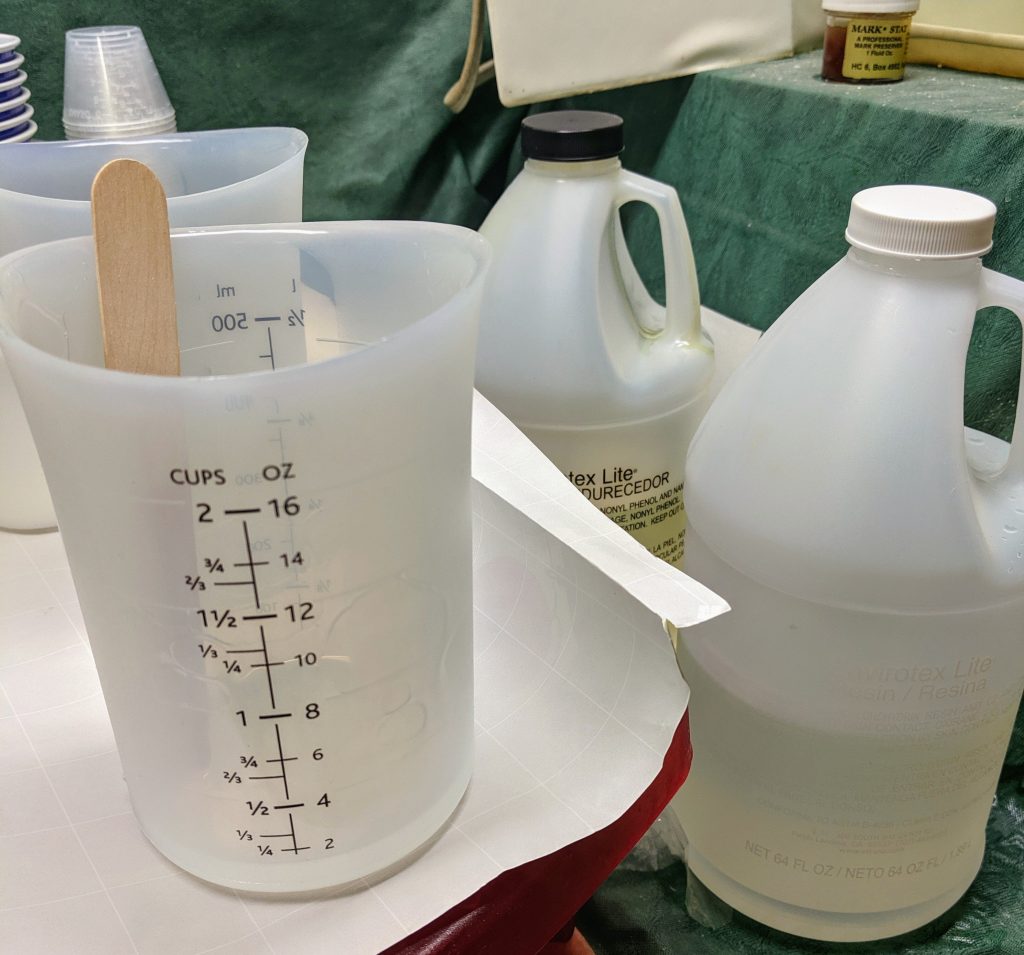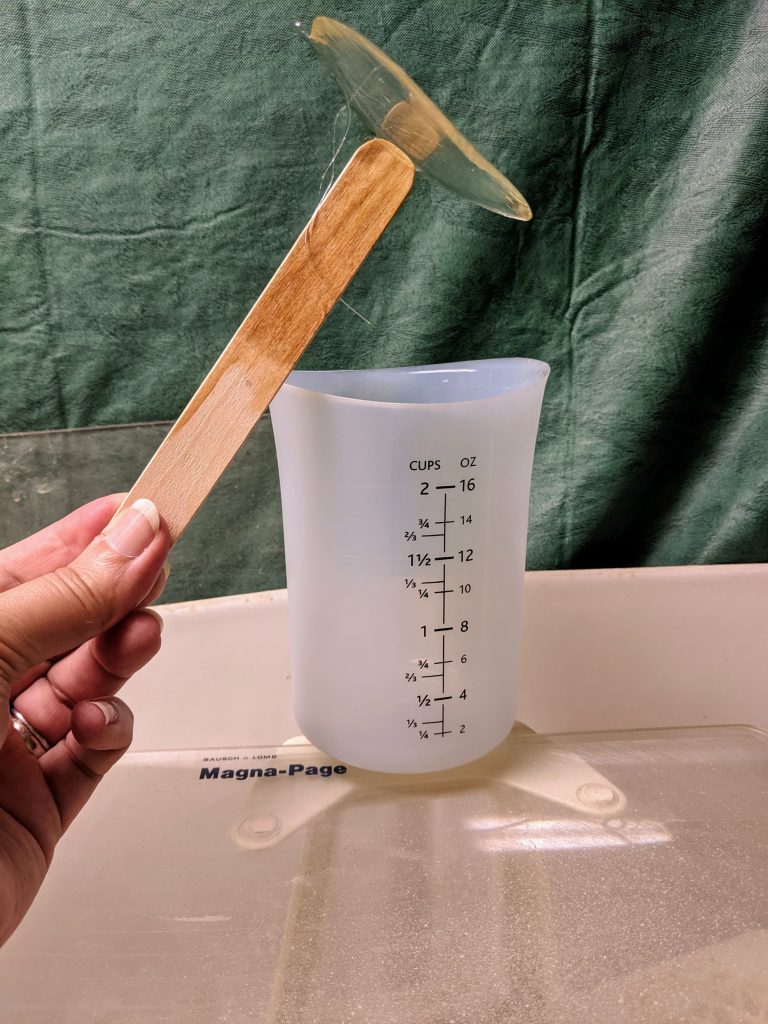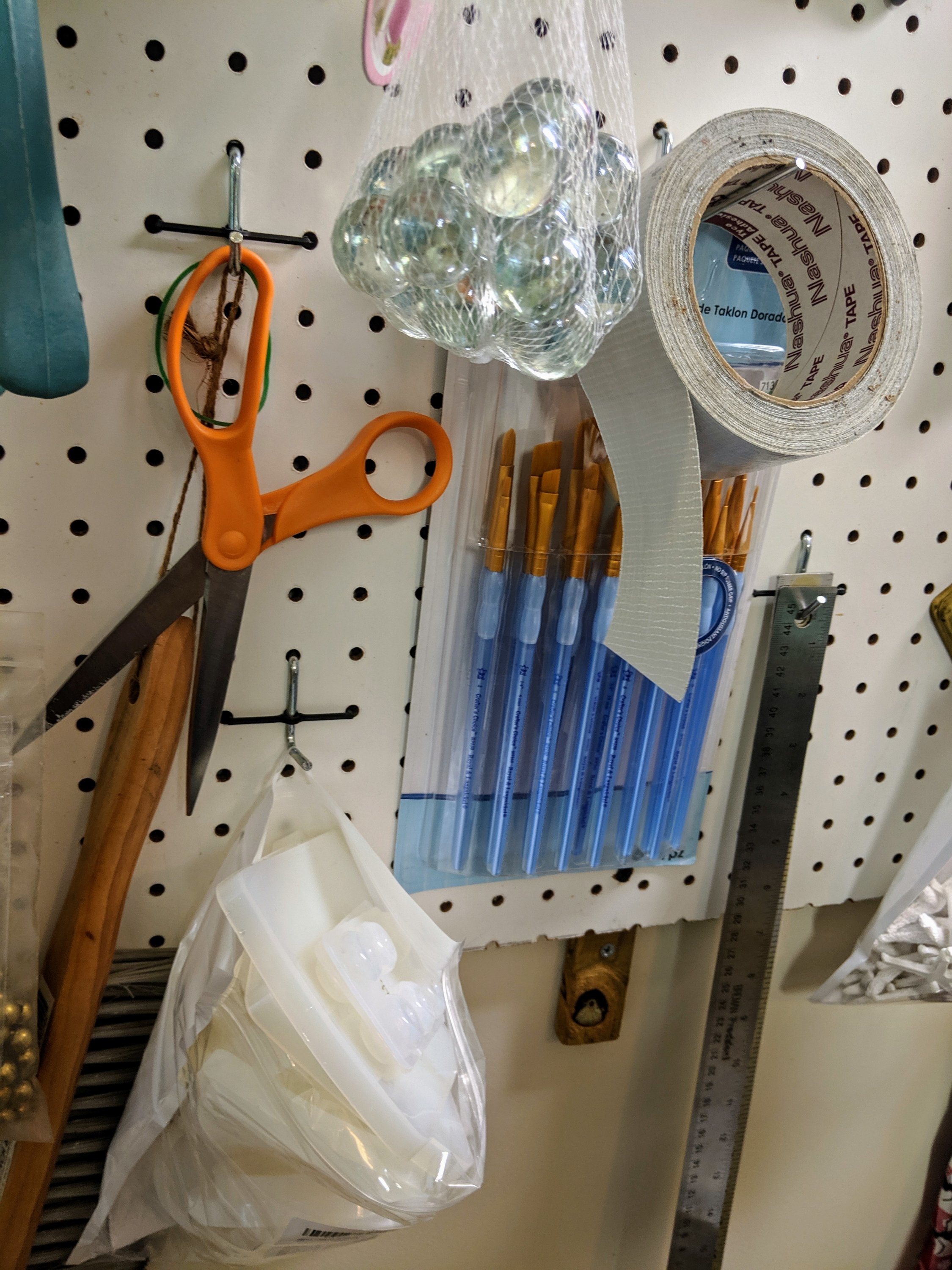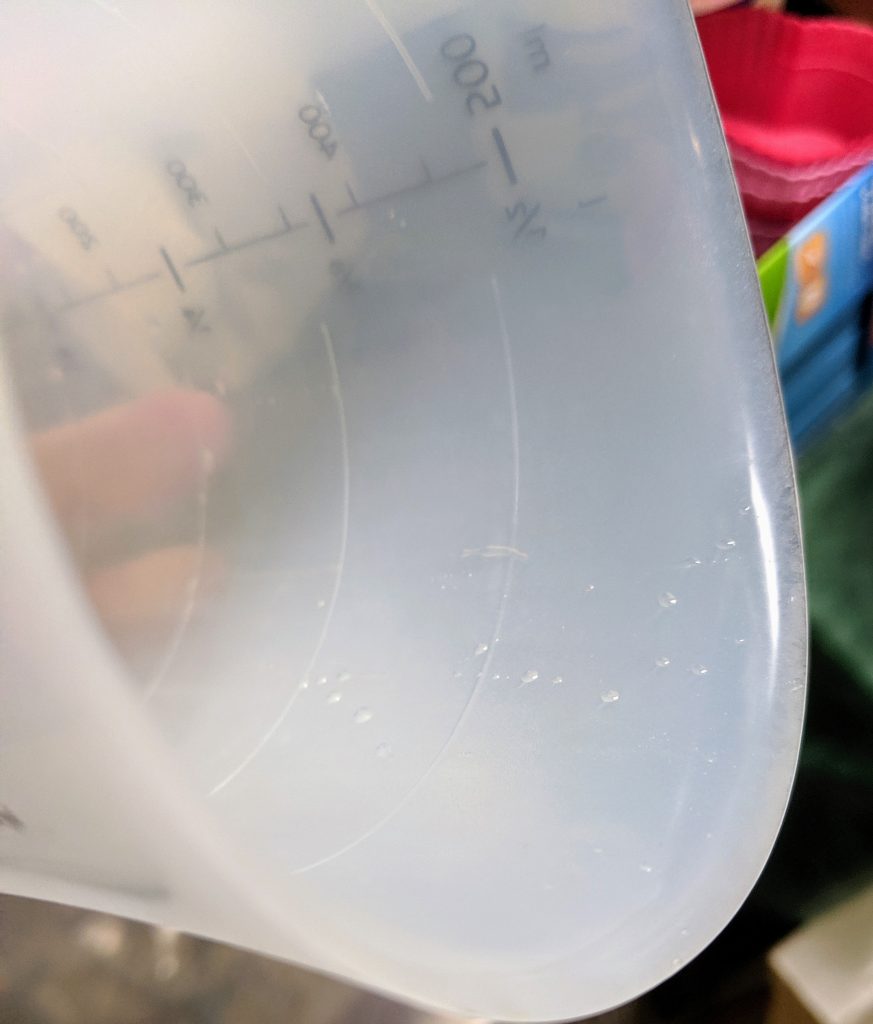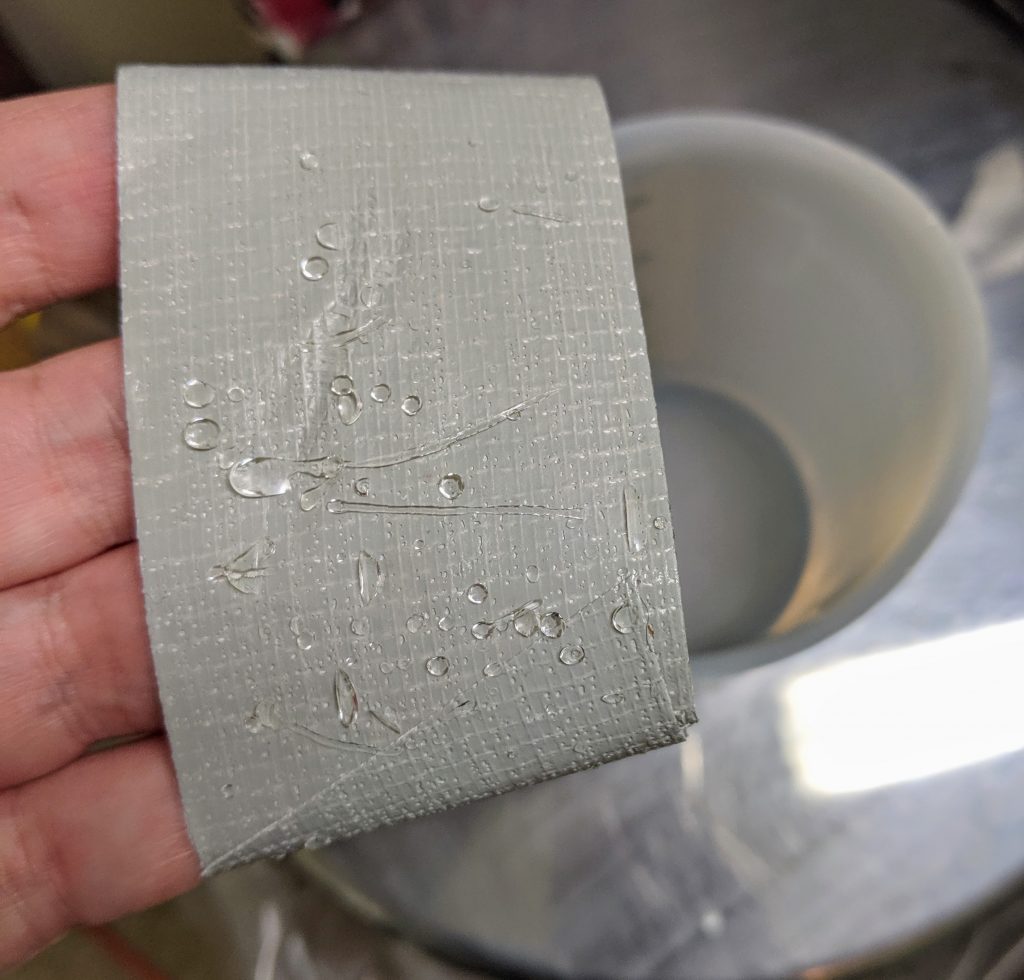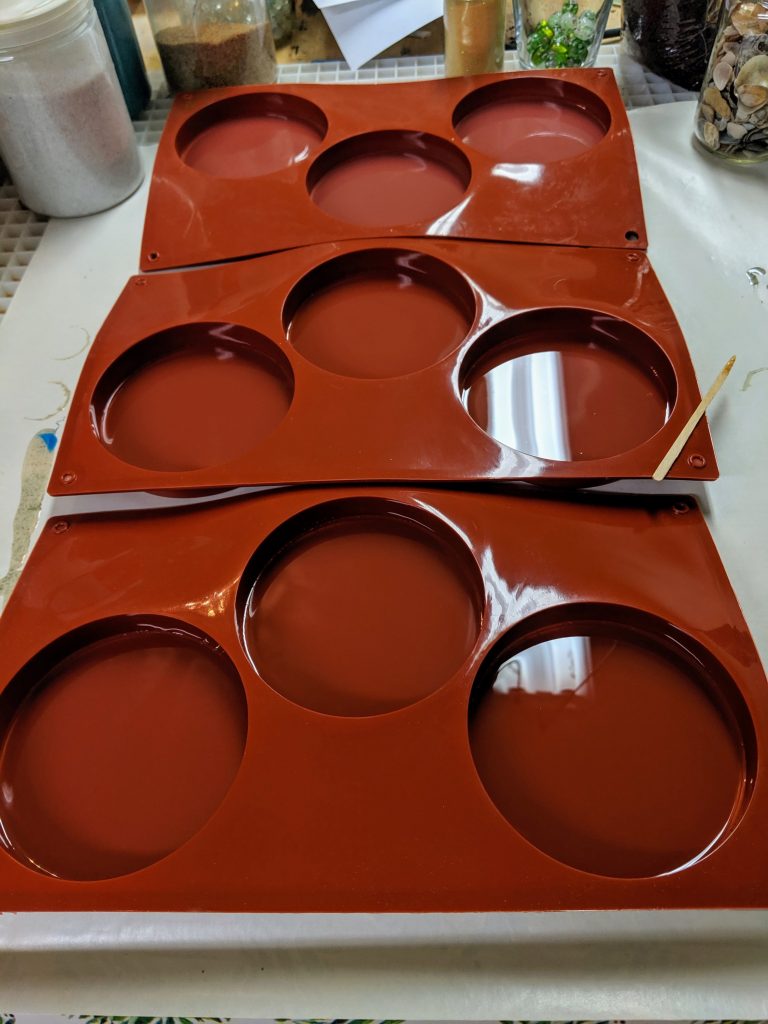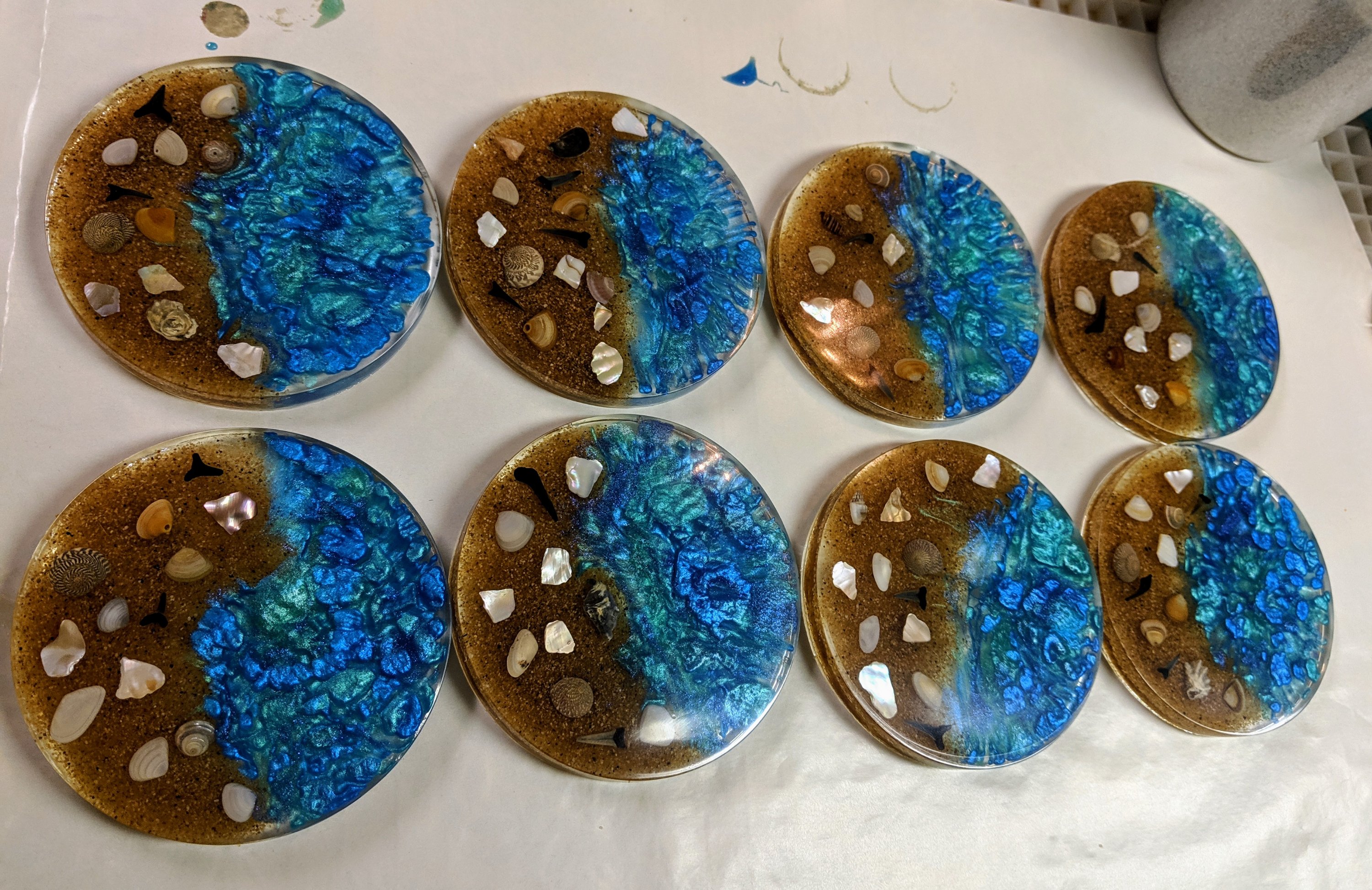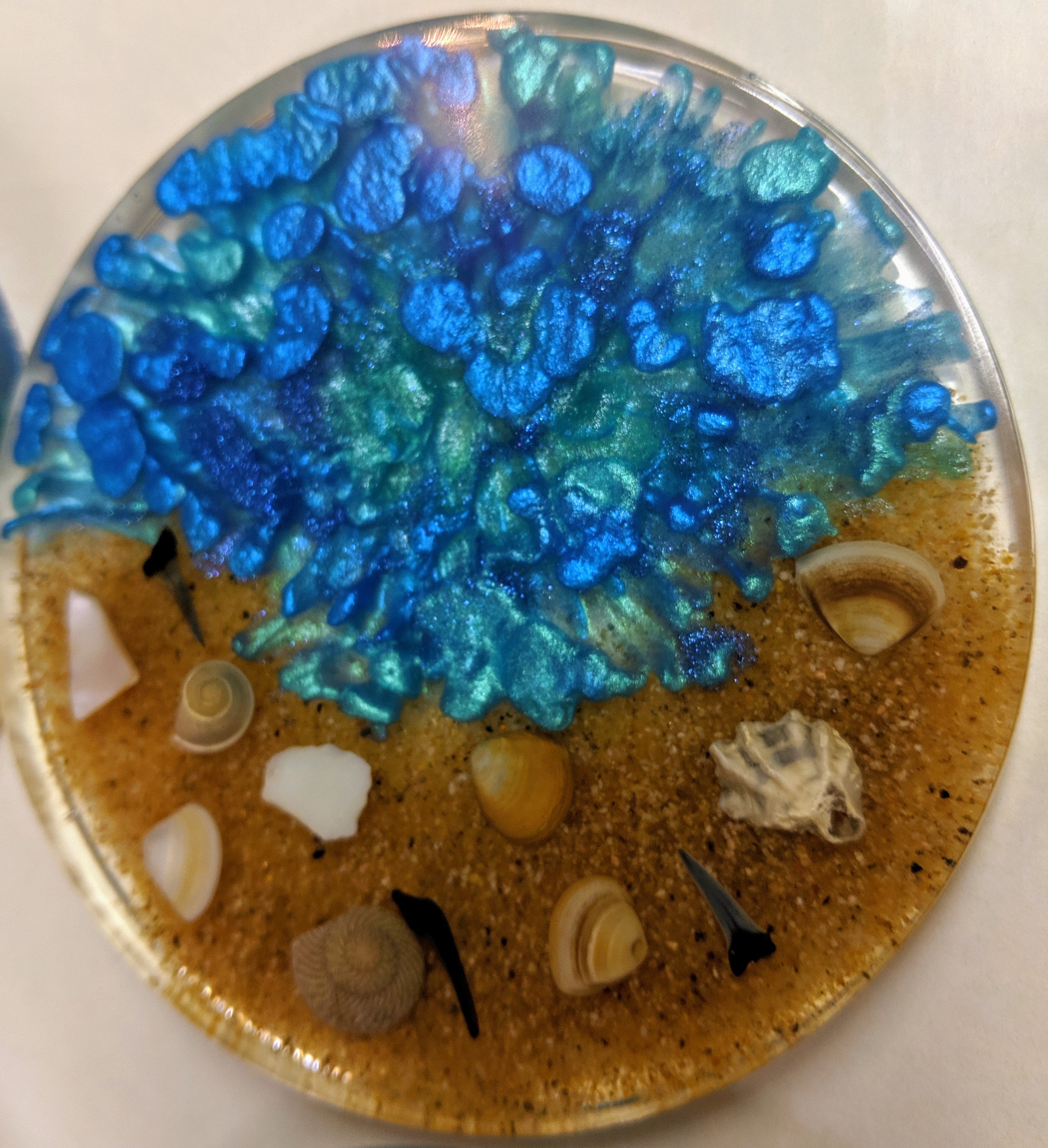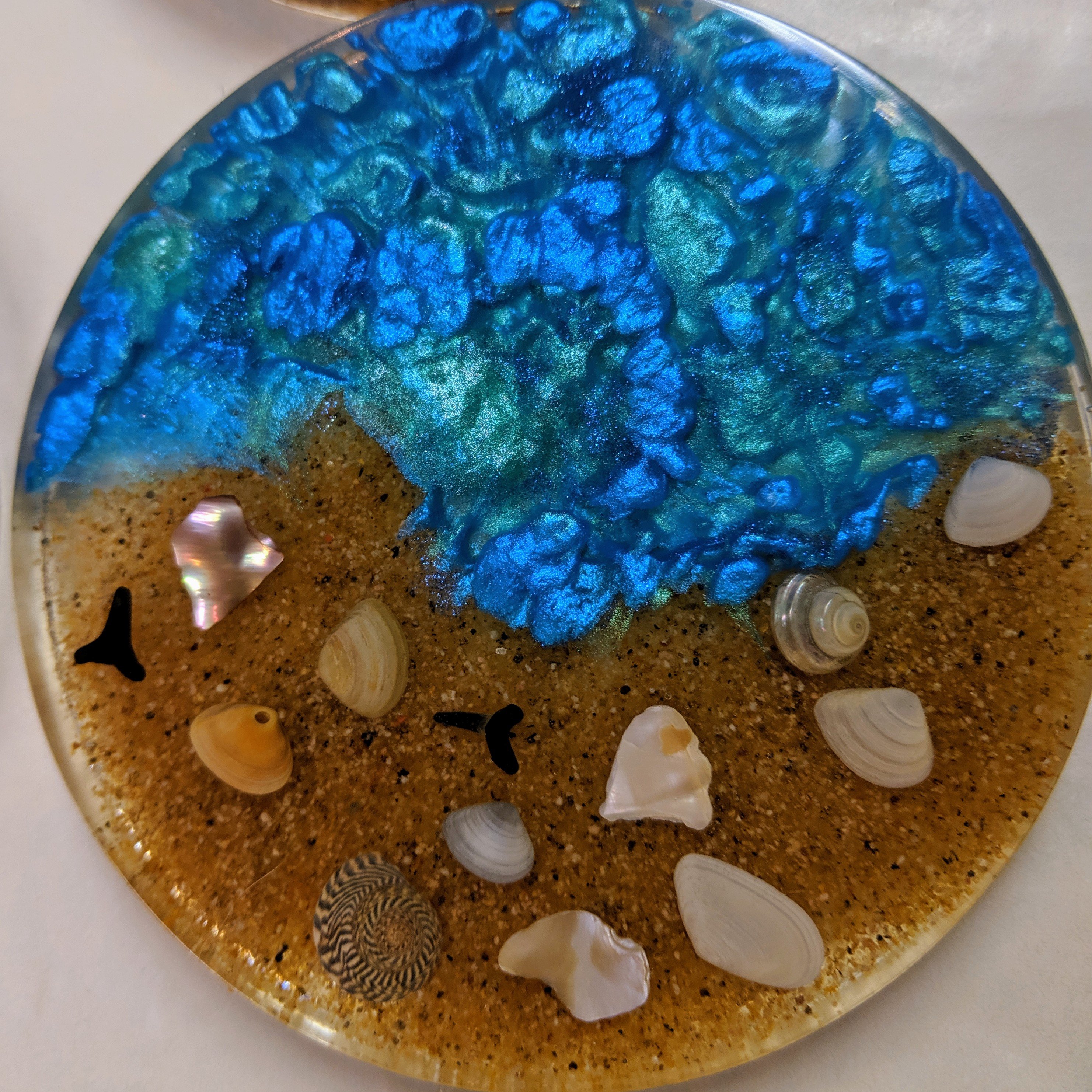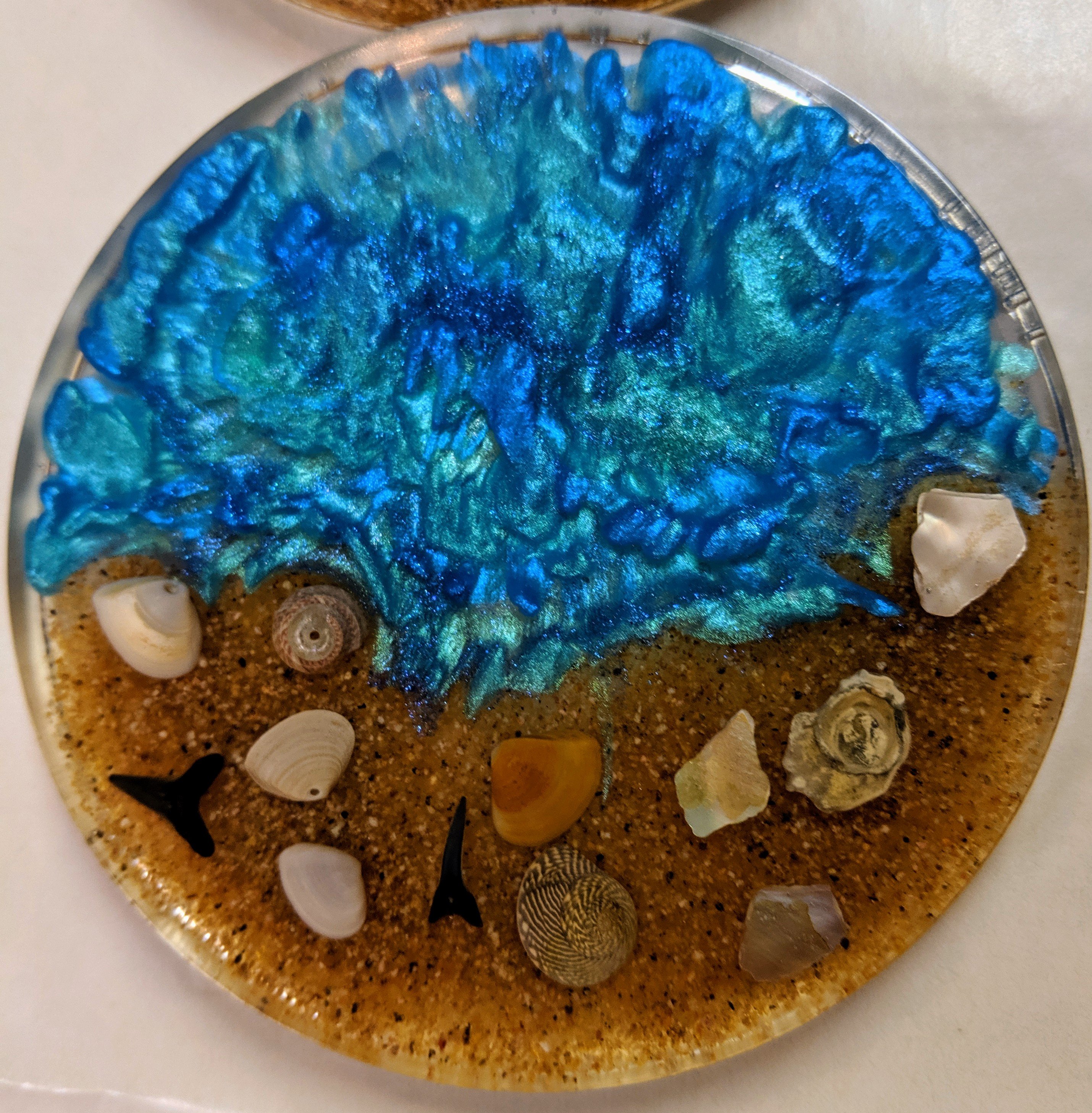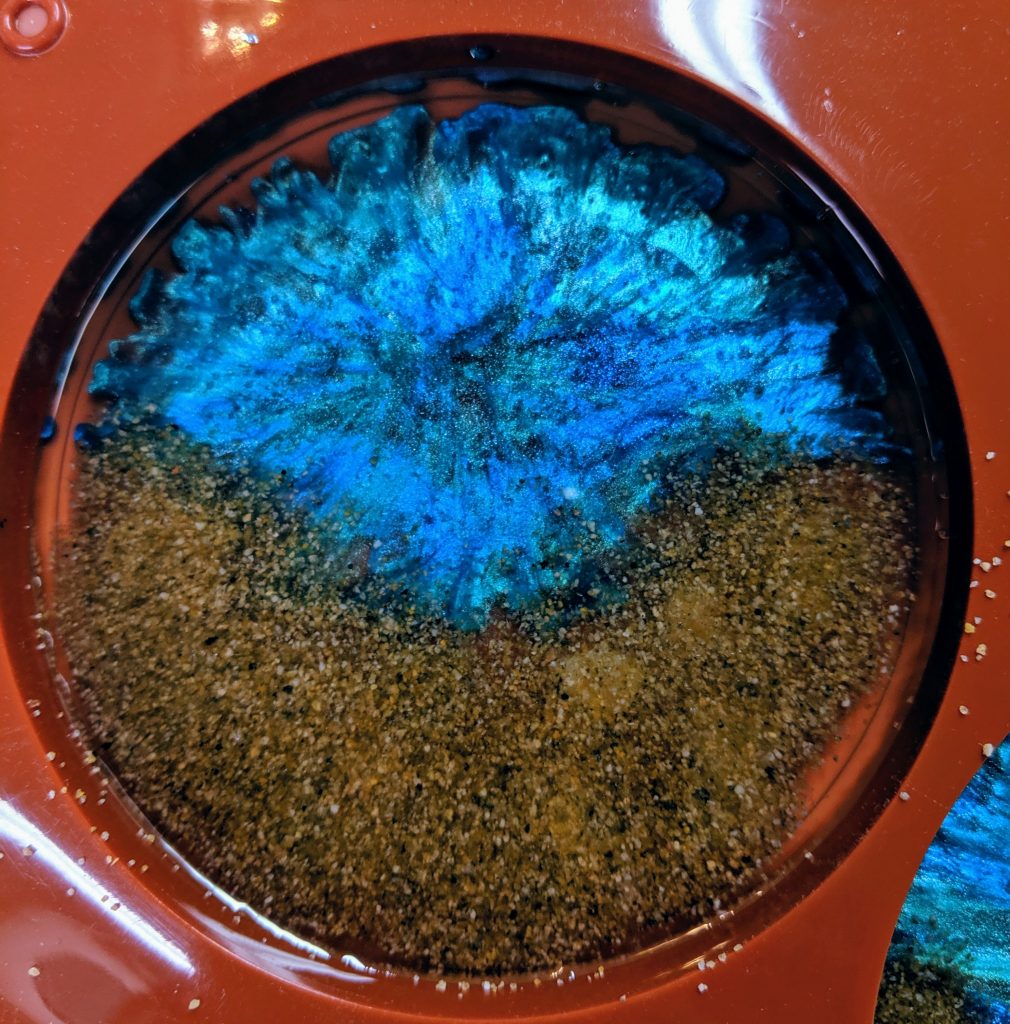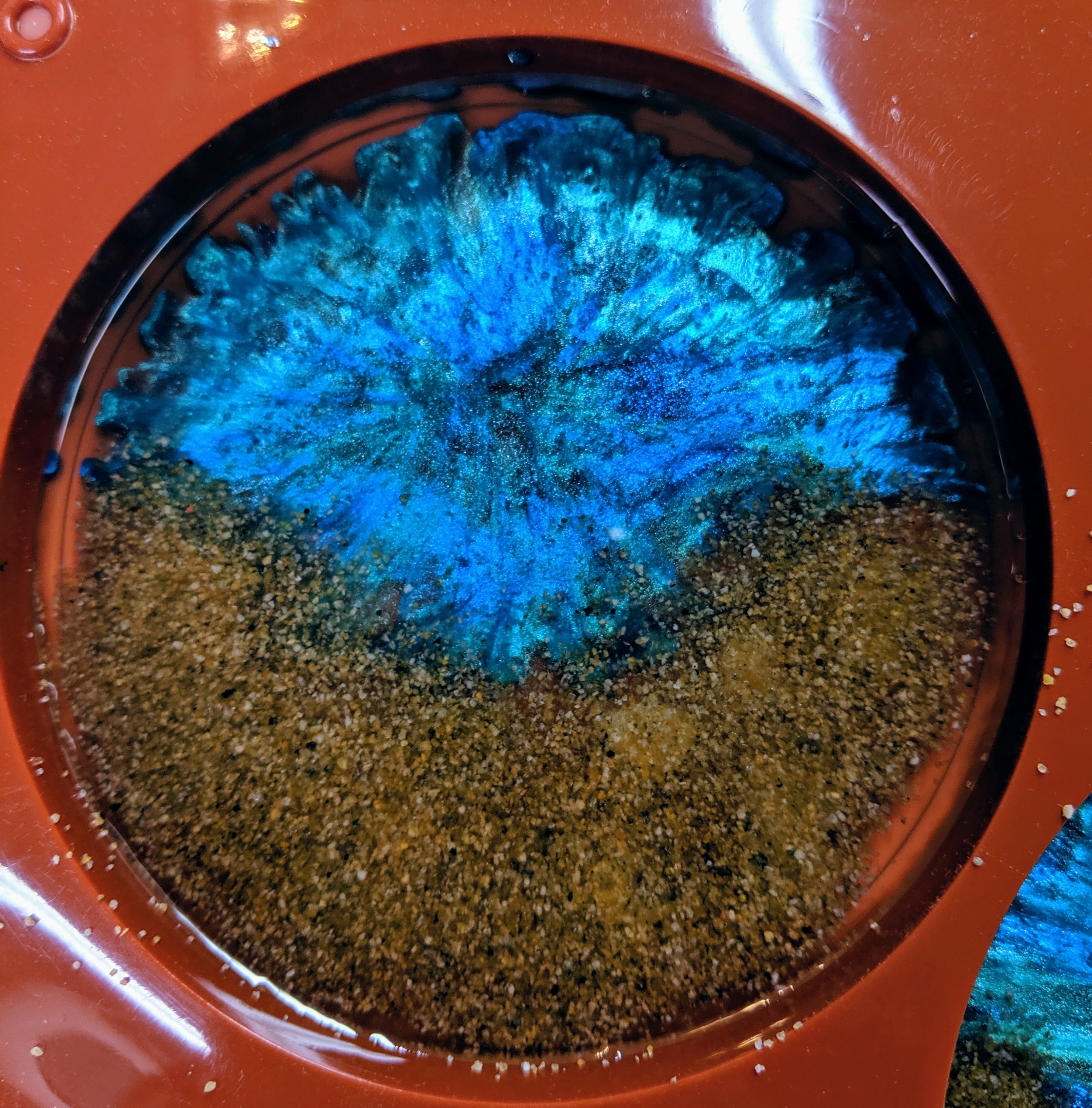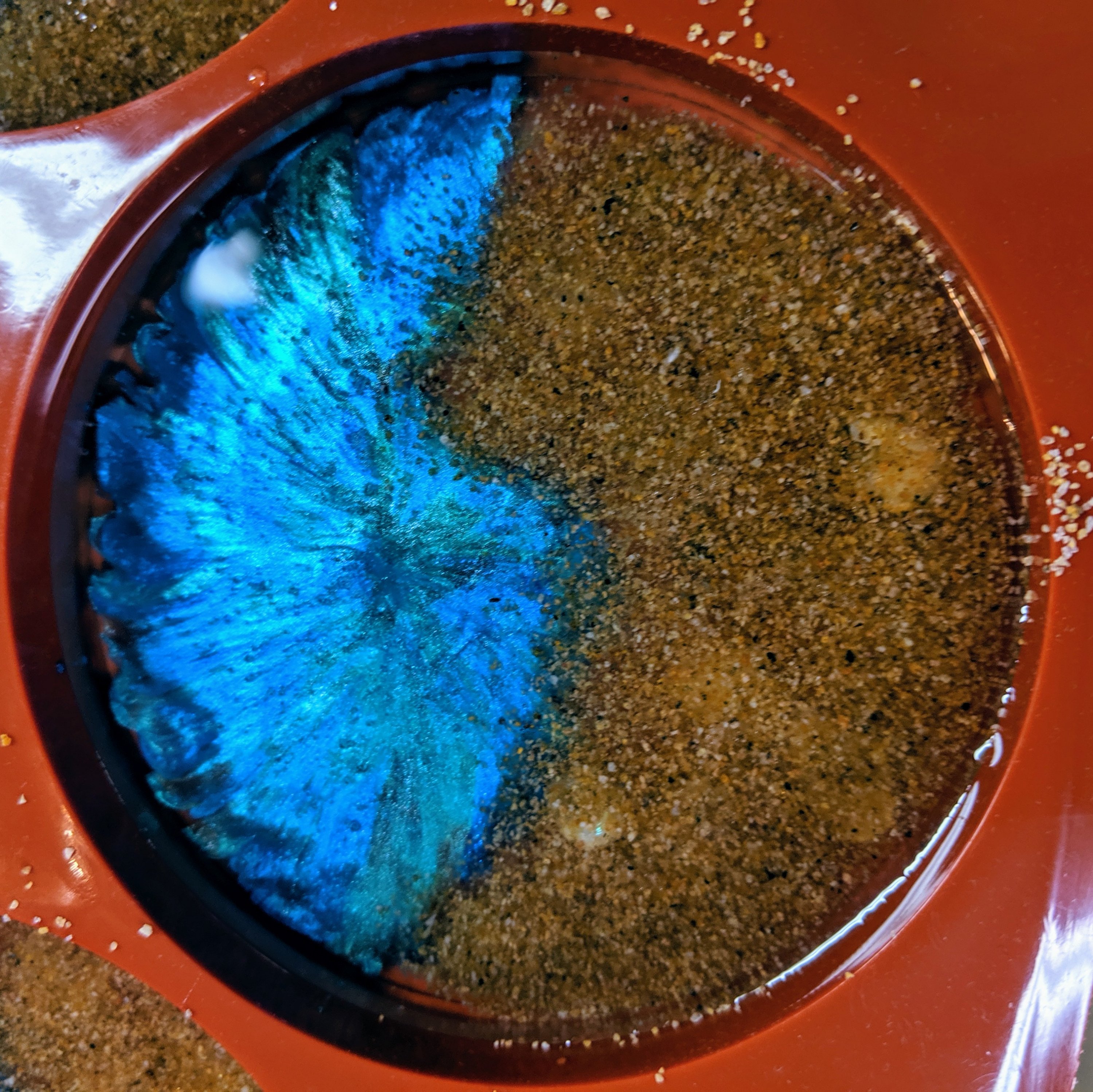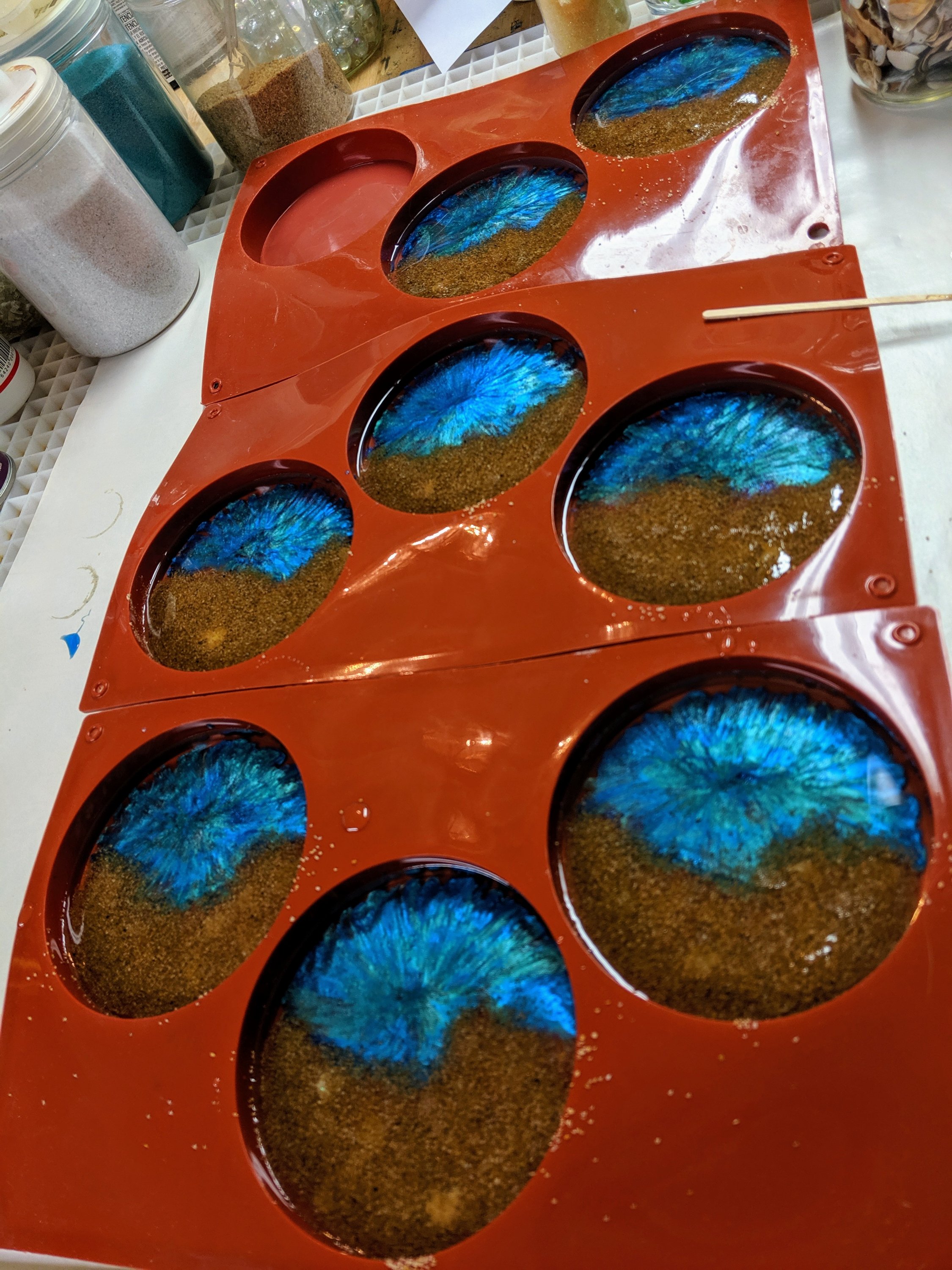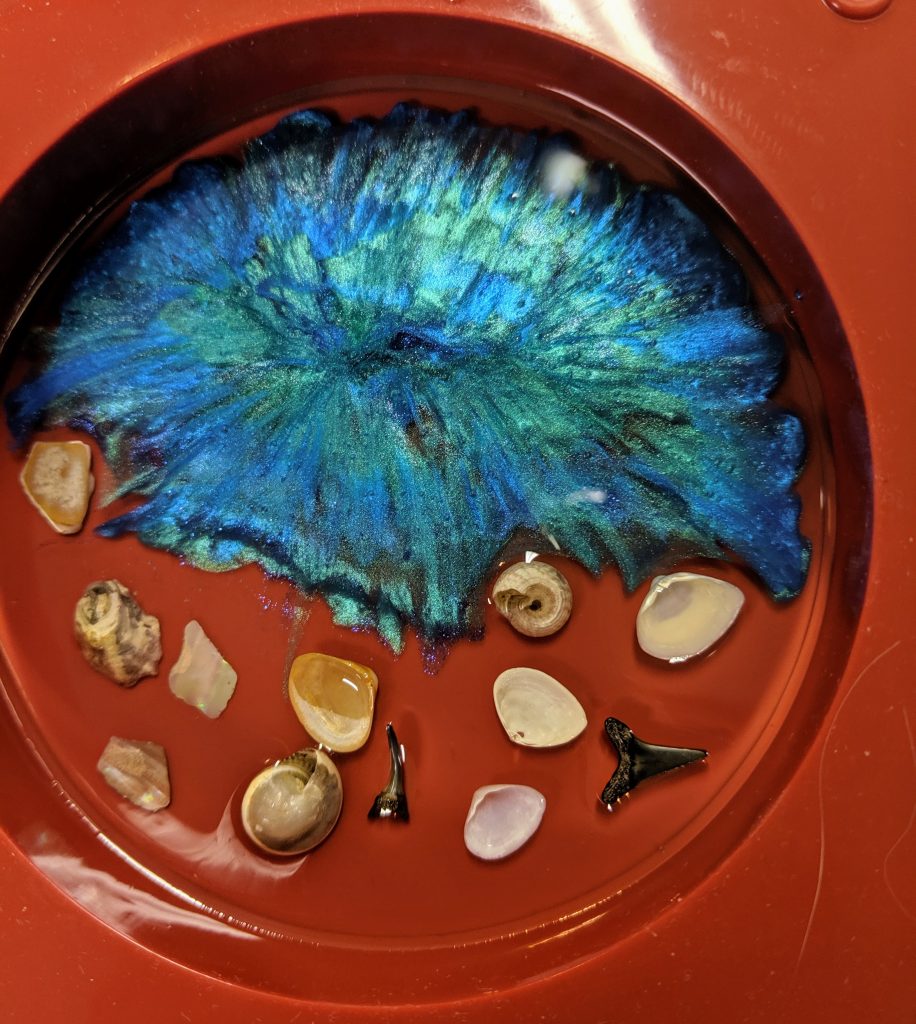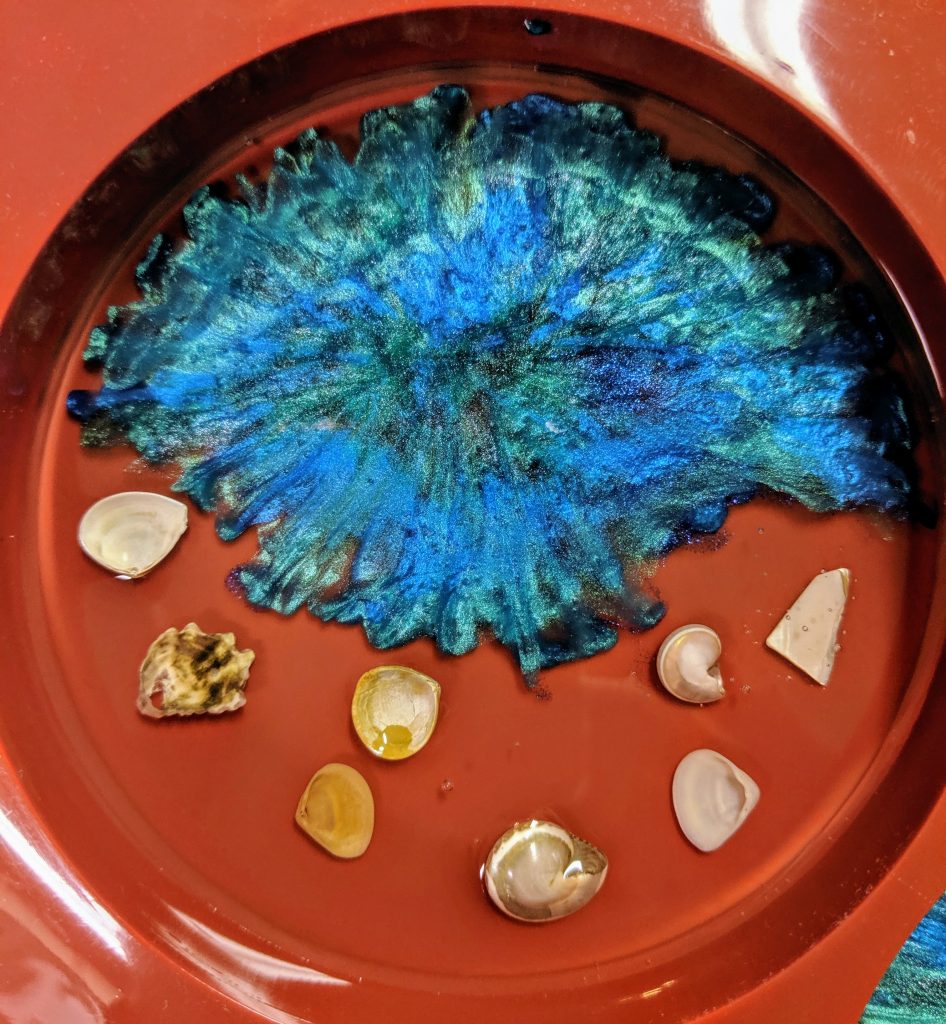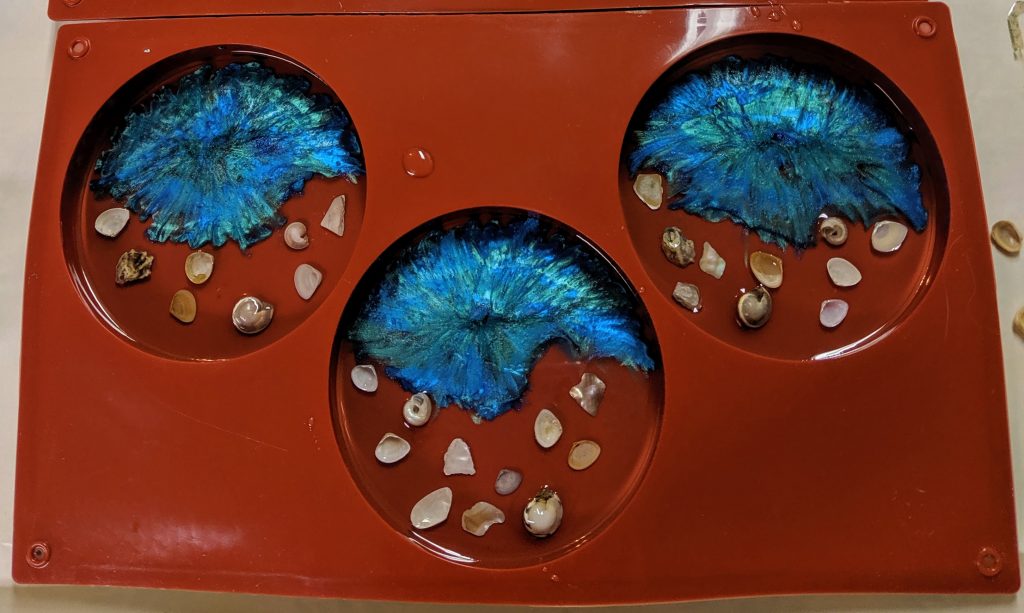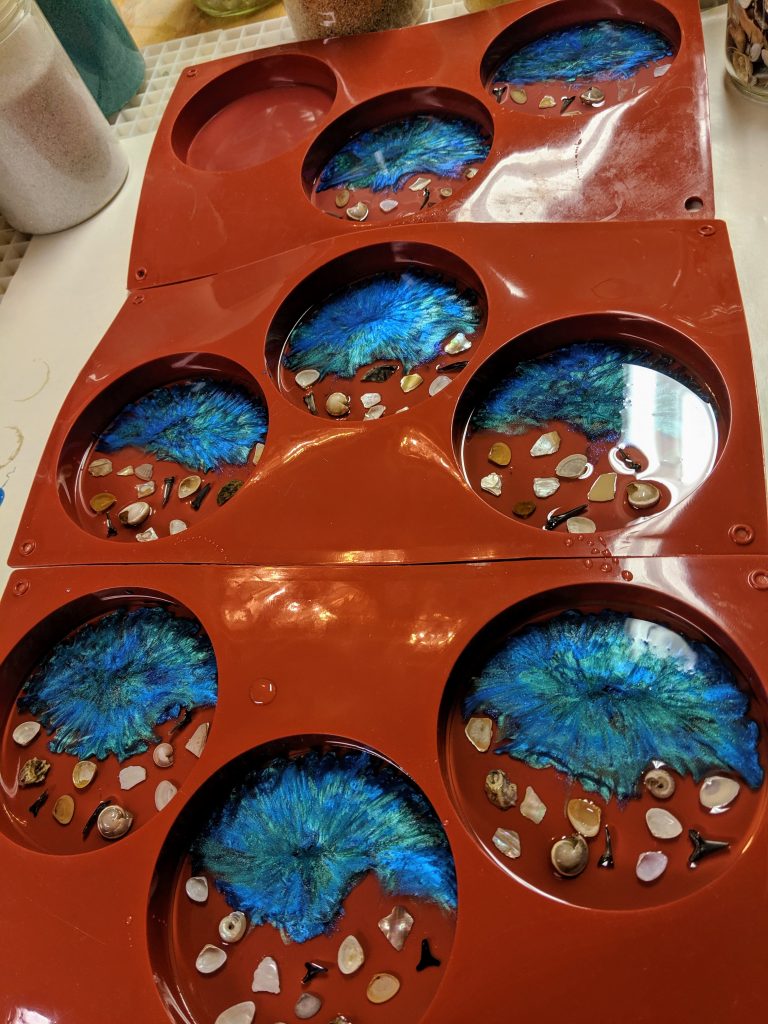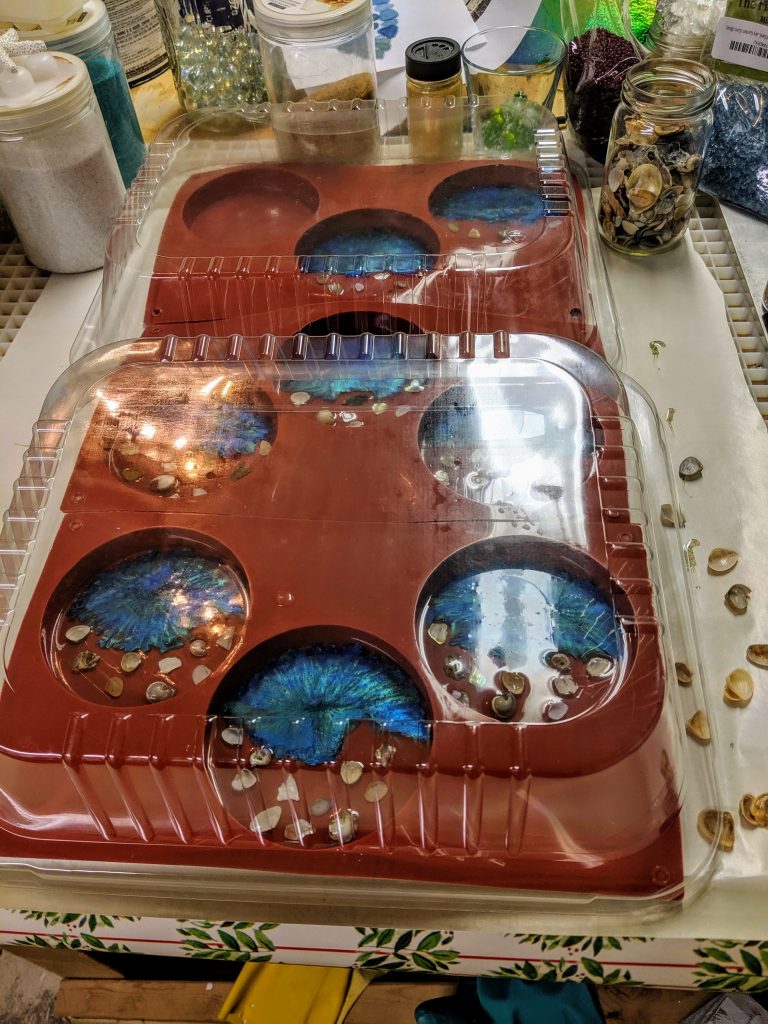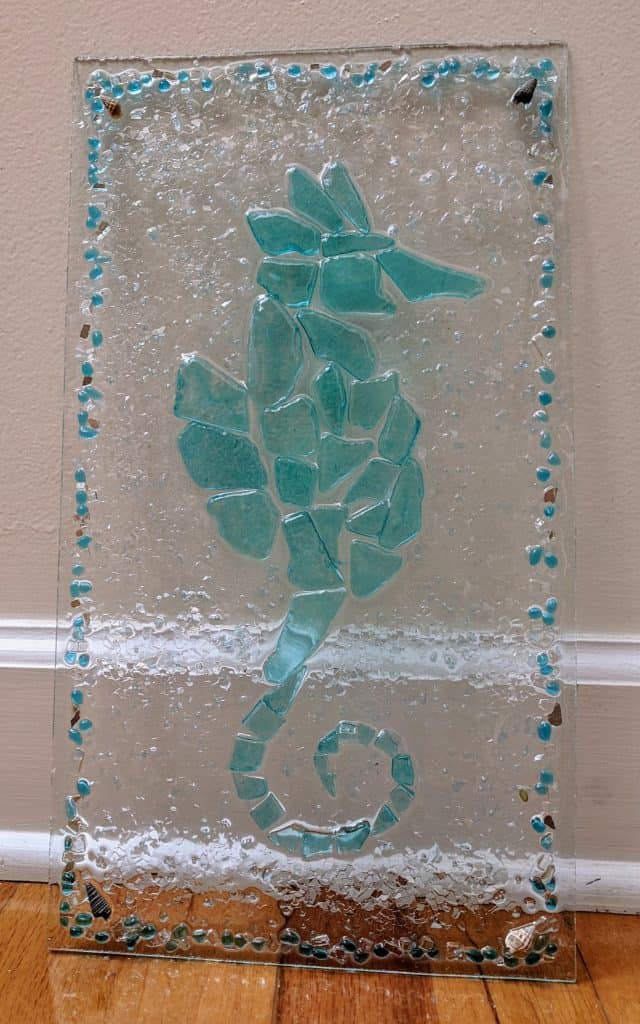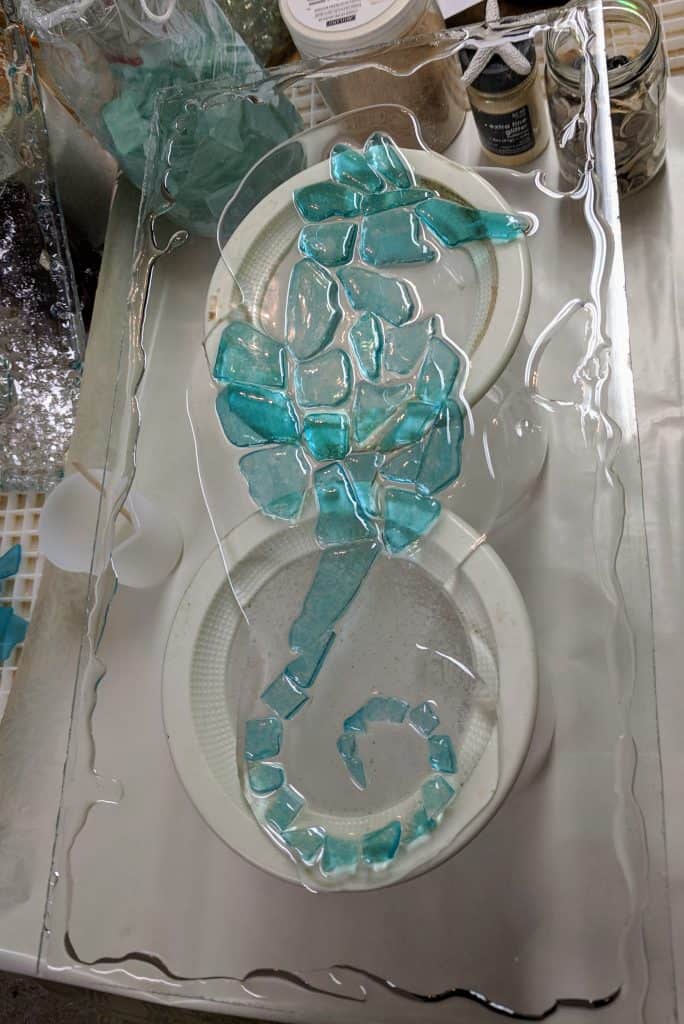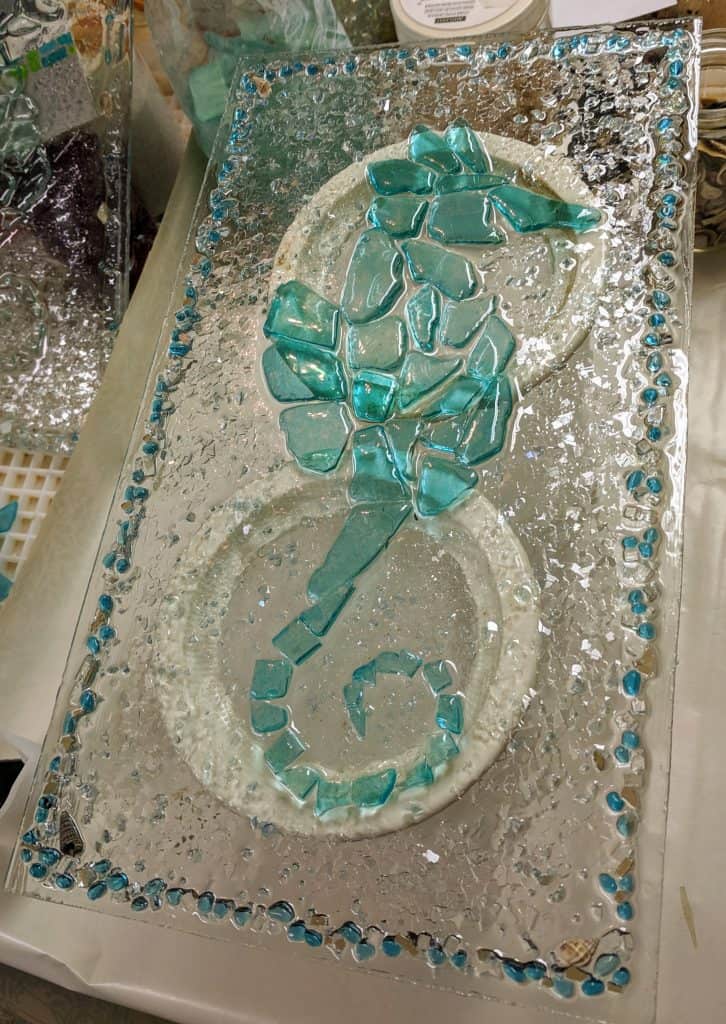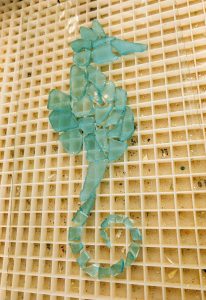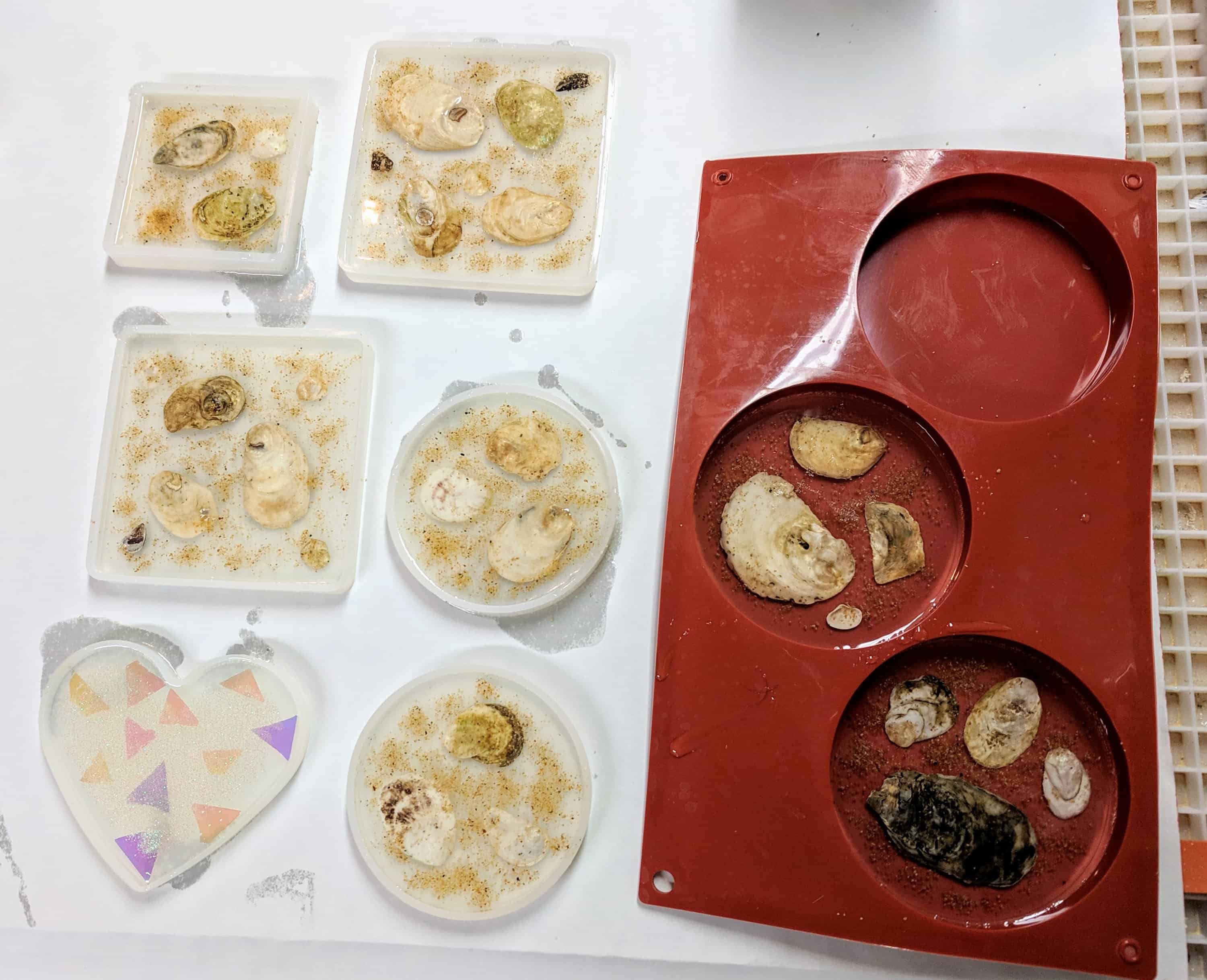Today was more cleanup on the window frame (I have to paint one side at a time), a bit of planning for the mermaid, and another layer in the next set of coasters. Below is actually the back side of the window. I sketched a rough outline of a mermaid I’m hoping to make before I put a coat of paint on the frame. When I’m done using the sketch as a guideline for the mosaic, the Sharpie ink will wipe right off with a wet paper towel. I also chose the glass (a blue Spectrum iridized) I want to use for the mermaid’s tail. I had to think upside down to do all of this today – the mermaid will end up facing the other direction and the coasters are built in backwards layers.
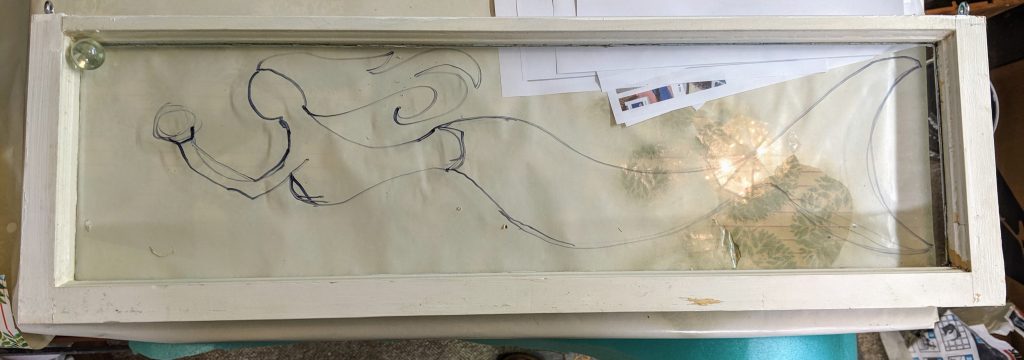
While the paint was drying on the frame, I mixed up 200 ml of resin for the next layer of decorations in the coasters. I poured a thin base layer for the coasters yesterday, so this is for layer #2. I had a little extra left over after pouring layers in 9 coasters.
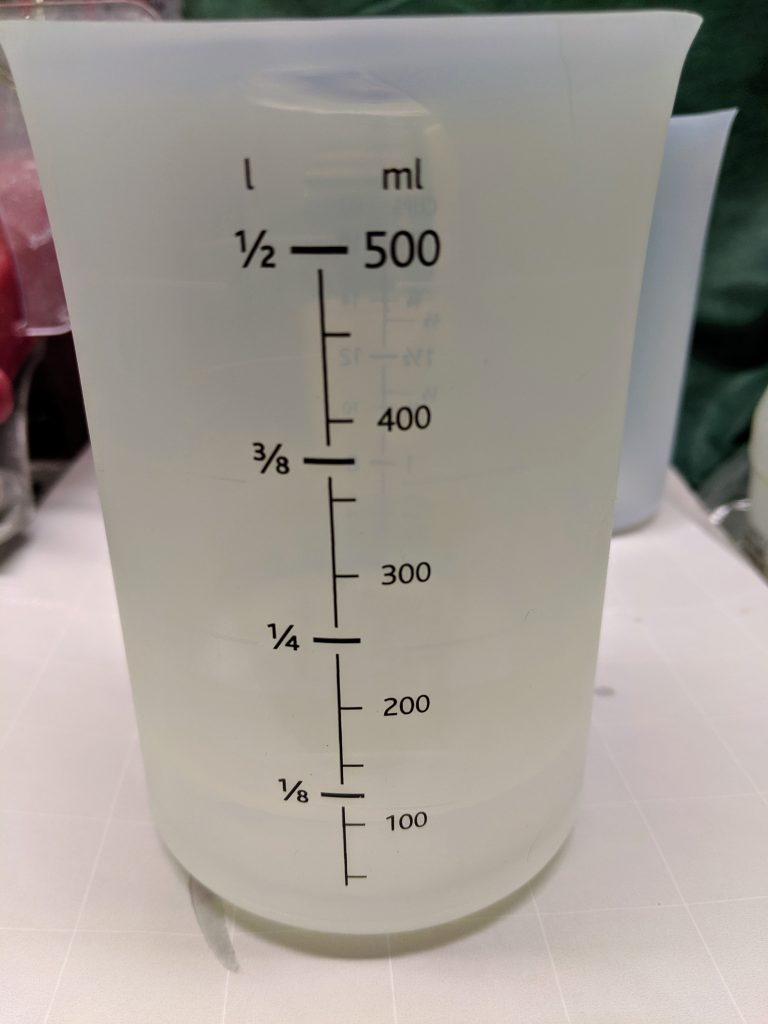
For my last set of coasters, I poured the water before I added the sand background. I decided I wanted to try reversing the order and add the shells and sandy beach background first this time around.
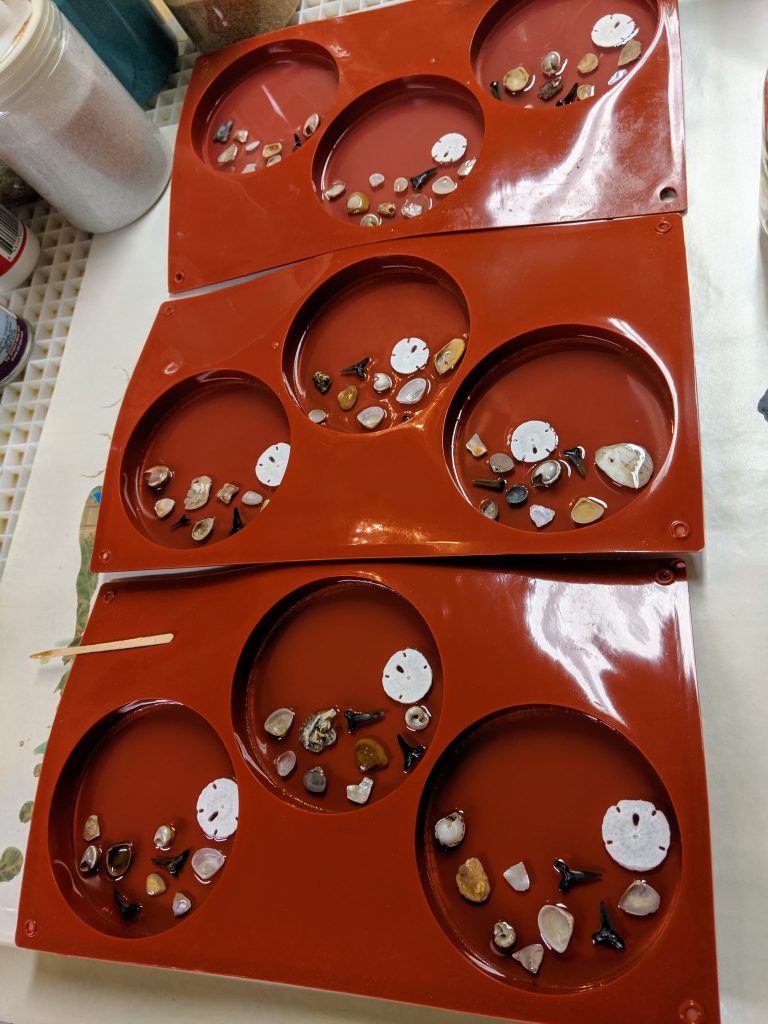
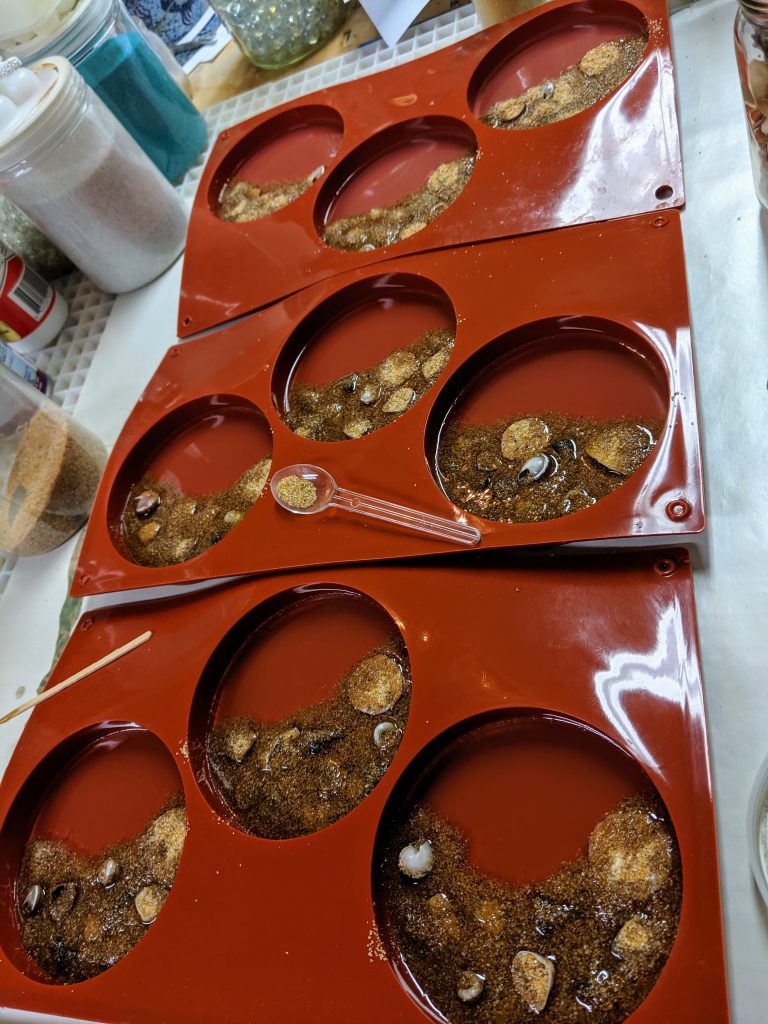
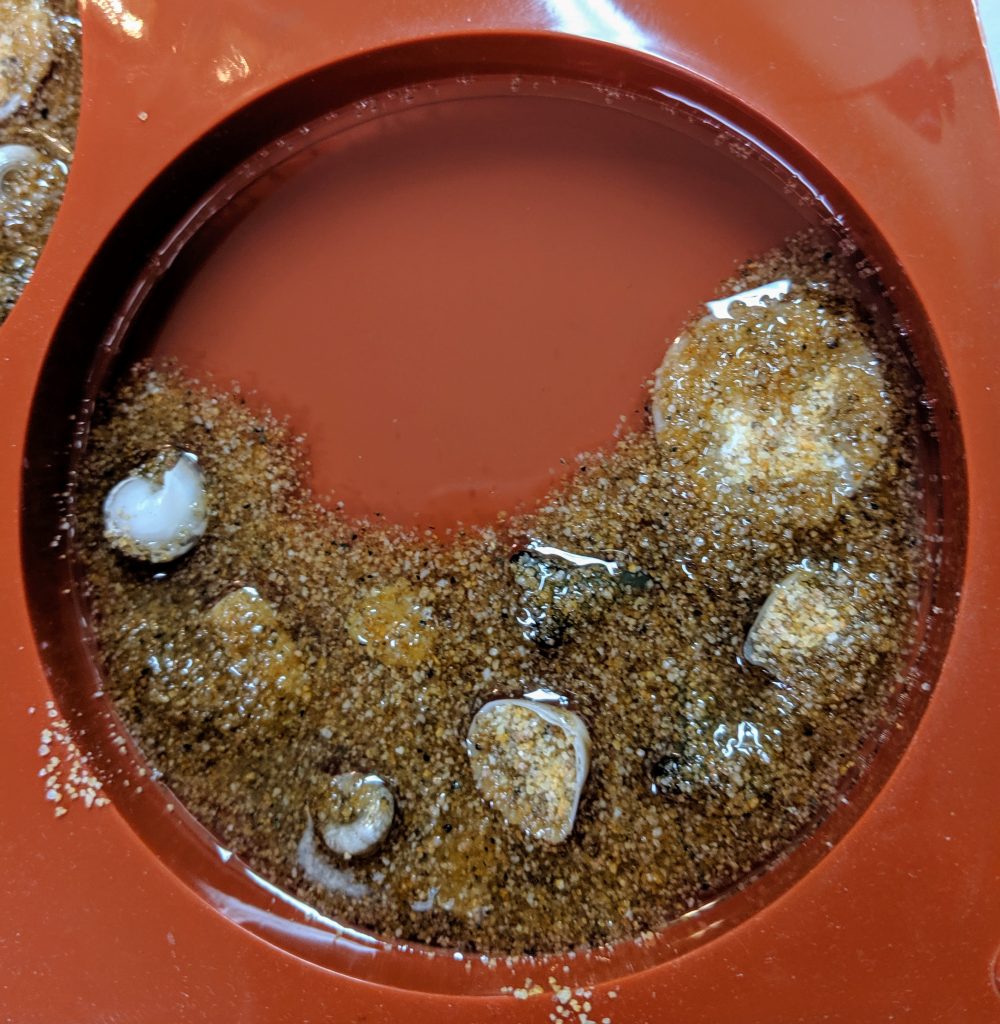
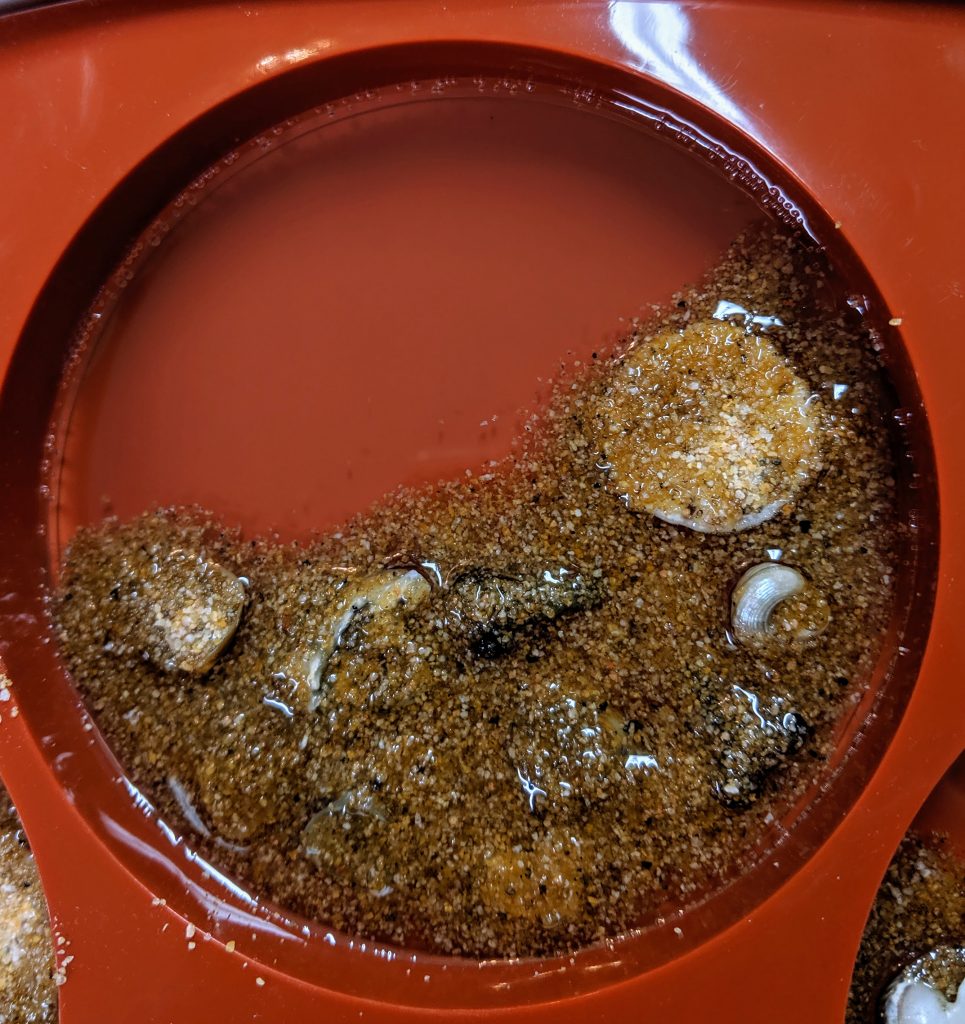
I also wanted to try adding the white pigment at the edge of the sand where the water meets the beach, so to speak, to make it look more like the bubbles you would see when the water washes up in waves. I mixed some white pigment and drizzled it along the edge of the sand in 5 of the coasters, so I will have four without the bubbles to compare.
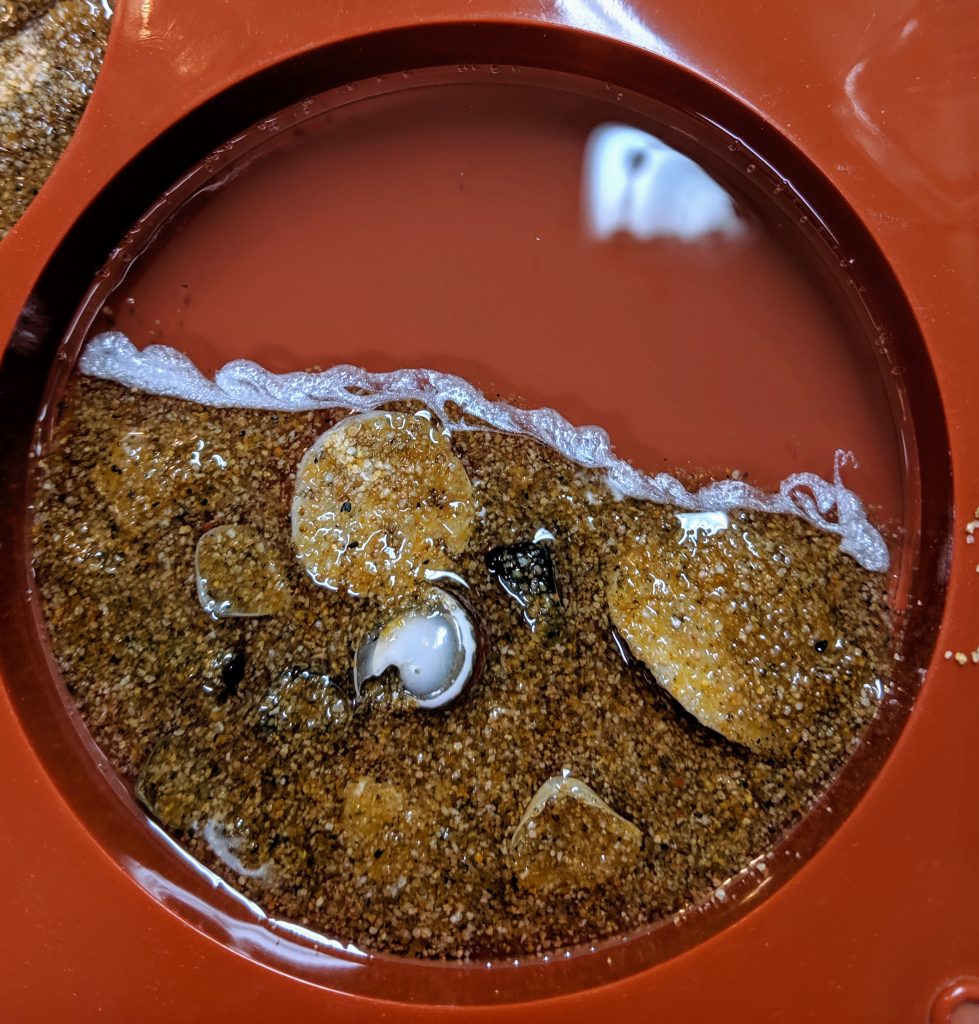
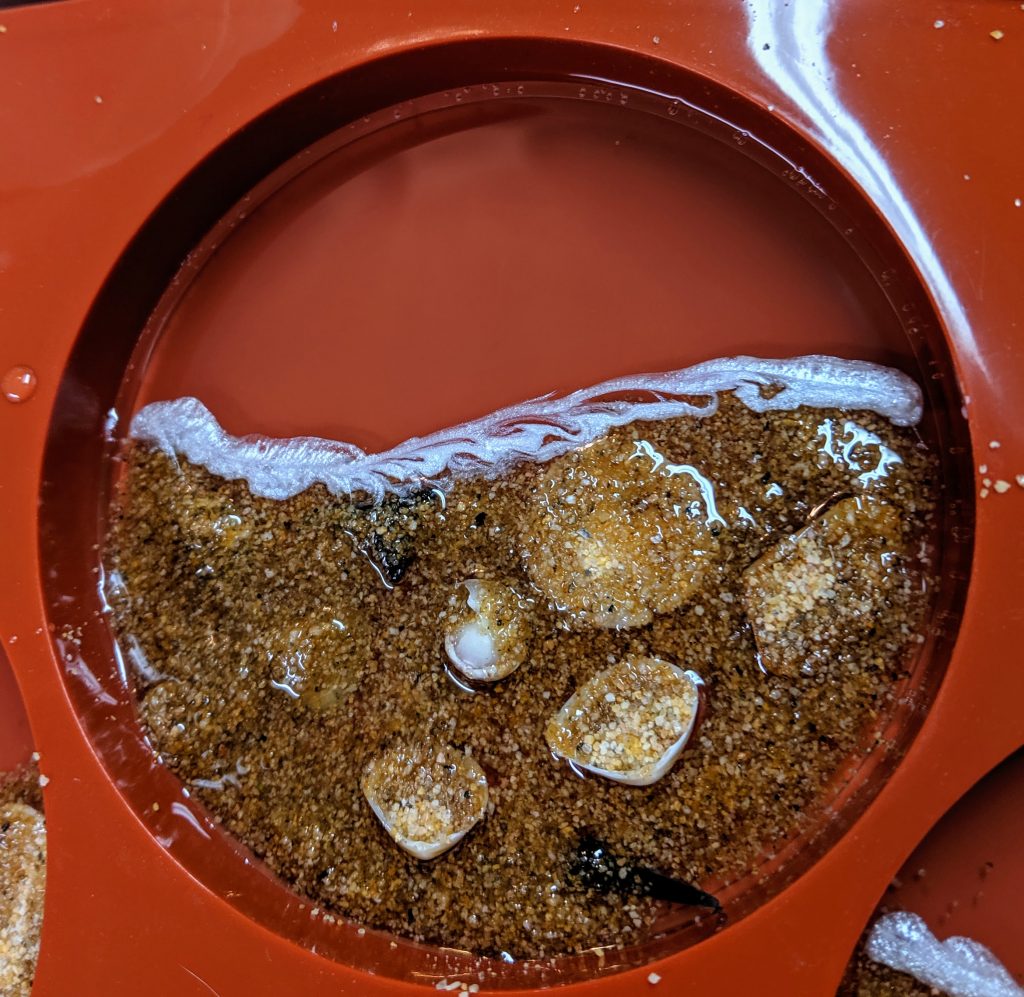
These will need to cure at least overnight before I can add the blue green pigmented water layer.

